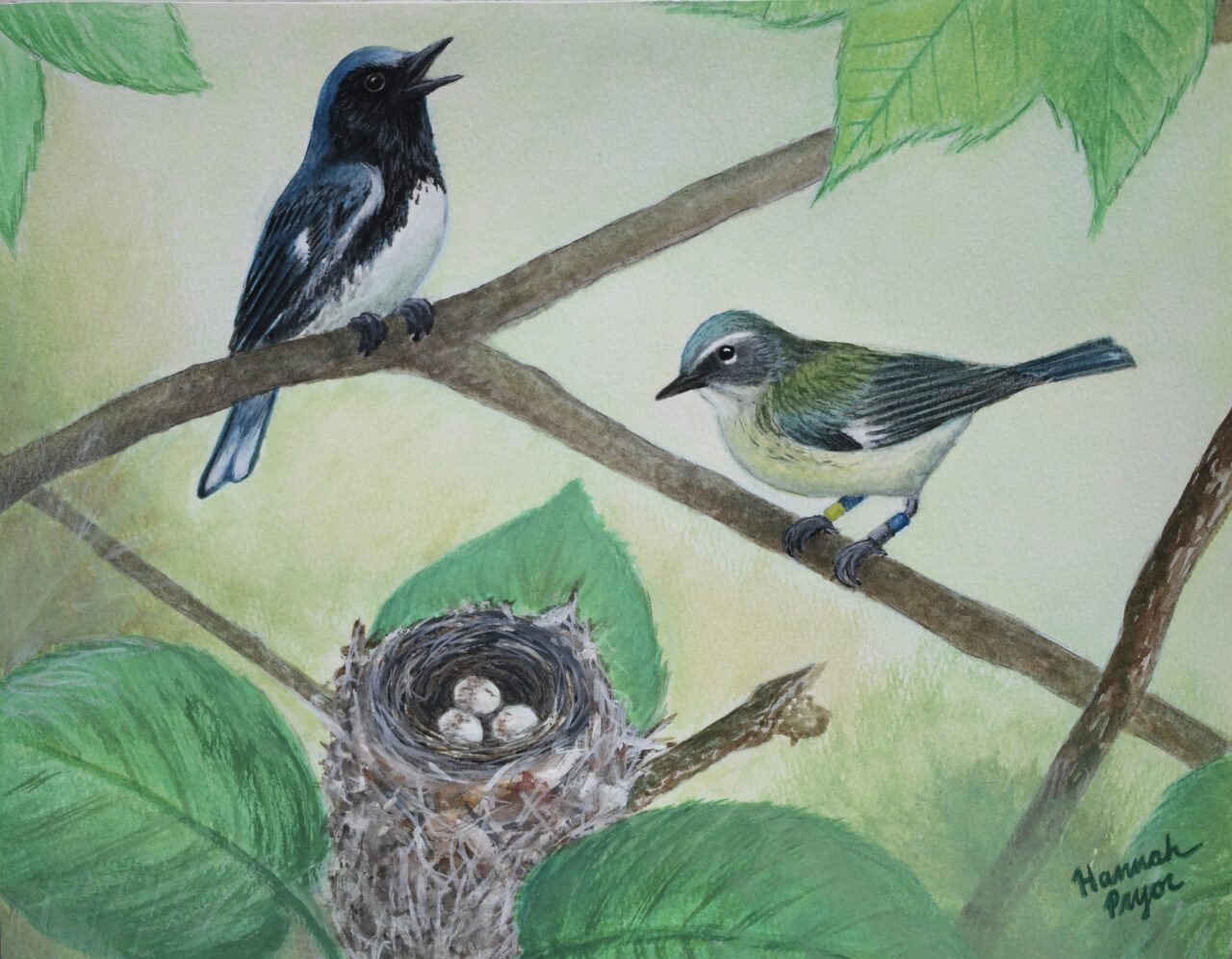Secrets of the Forest: My First Week As a Field Tech on the “Blue Crew”. Hannah Pryor ’26
The lonely wail of a loon echoes across the rose-gold waters of Mirror Lake as the sun breaks over the mountains. First light finds us in the data barn overlooking the water, gearing up for a day in the field with the Black-throated Blue Warblers. By 6:00, we will arrive at our field site and venture forth into the unbroken acres of the Hubbard Brook Experimental Forest with binoculars, a notebook, and a handheld GPS unit.
As a new undergraduate field tech, my first week in the forest held a series of wonders, from golden sunlight and emerald leaves to the lively music of rushing creeks and woodland songbirds. With every step, I encountered delicate, painted wildflowers, foraging insects and animals, and, best of all, the occasional Hermit Thrush nest, resembling a fern-enclosed hobbit hole in the leaf litter. And, then, there were the Black-throated Blues.
I worked with other members of the field crew for the first several days, following the Black-throated Blue Warblers and getting to know them. I learned their different songs and what each meant, whether they were defending their territory, attracting a mate, or following a female that might be nest-building. I began to pick up on subtle behavioral cues that might reveal the location of a nest or tell me whether the female was building or laying. The band combinations on my map, once a jumble of letters and numbers, I now associated with individual birds I had observed, such as BABY (Blue-Aluminum-Blue-Yellow), a female that our records showed to be at least 10 years old!
My excitement has only increased since then. Each day holds a new set of surprises and discoveries. Tiny eggs, their shells a mosaic of cream and gray-brown, have begun to appear in the nests we monitor. New birds continue to emerge across the plot, and birds I have followed for many hours might unexpectedly lead me to a tiny nest of birch bark and rootlets, hidden away in a dense thicket of hobblebush. My growing familiarity with Black-throated Blue Warbler ecology has not prevented me from continuing to learn and observe new and interesting aspects of the species each morning I spend in the woods, and each interaction or unusual behavior continues to pique my interest as I track them through the trees and undergrowth. Now, further into the season, I look forward to the remainder of the summer, not only for the skills I hope to gain from working with the Black-throated Blues, but also for the opportunity to continue watching their journeys, the challenges they overcome, and the chicks they will raise and fledge. I love hearing their familiar, buzzy “zoo-zoo-zee” each day in the field, and that song will always hold a special meaning for me after interacting with these birds and getting to experience this breeding season with them.

—Written and illustrated by Hannah Pryor.
